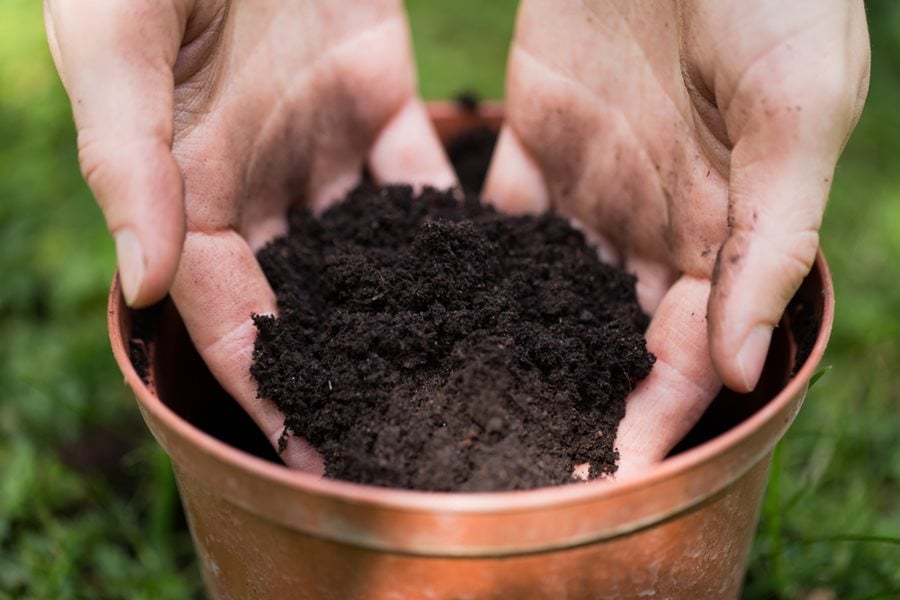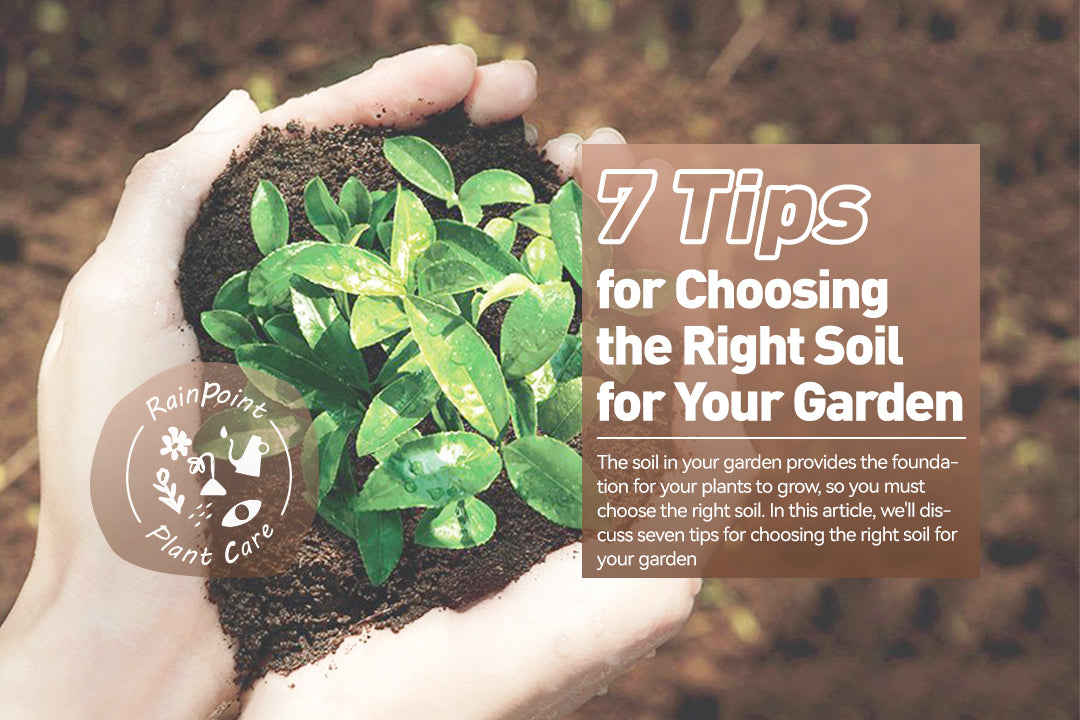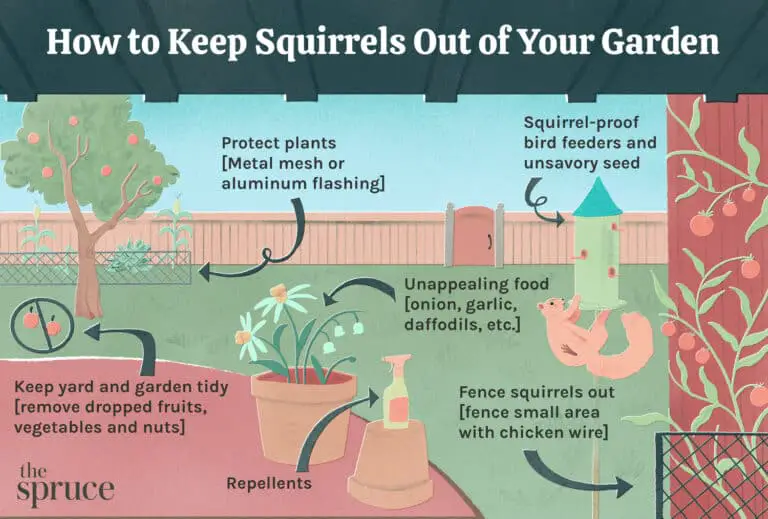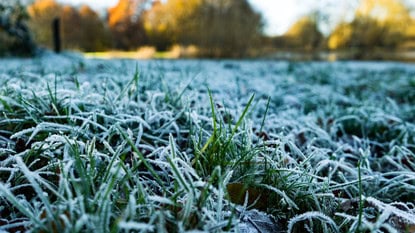How To Choose The Right Soil For Your Garden: Expert Tips
To choose the right soil for your garden, consider the plant type and soil properties like drainage and nutrient content. Perform a soil test for best results.
Gardening success begins with the right soil. Understanding your plant’s needs helps in selecting the ideal soil type. Some plants thrive in sandy soil, while others prefer loamy or clay soil. It’s crucial to ensure good drainage and adequate nutrients.
A soil test can provide detailed insights into pH levels and nutrient deficiencies. This helps in making informed decisions, ensuring your garden flourishes. Healthy soil promotes robust plant growth, leading to a thriving garden. Investing time in soil selection pays off with vibrant blooms and bountiful harvests. Choose wisely for the best gardening experience.
Importance Of Soil In Gardening
The soil in your garden is crucial. It helps plants grow strong and healthy. Good soil provides support, nutrients, and water to plants. Understanding the importance of soil can make your garden thrive.
Foundation For Plant Health
The soil acts as the foundation for plant health. It anchors the roots of the plants. Healthy soil allows roots to spread and grow deeply. This helps plants stand tall and resist strong winds. Proper soil structure also ensures good air circulation. Good air circulation is necessary for root health.
Role In Nutrient Supply
Soil plays a key role in the nutrient supply for plants. Plants need nutrients like nitrogen, phosphorus, and potassium. These nutrients are found in the soil. Healthy soil is rich in organic matter. Organic matter helps release these nutrients slowly. This steady nutrient supply supports plant growth.
Here is a table showing essential nutrients for plants:
| Nutrient | Function |
|---|---|
| Nitrogen (N) | Promotes leaf growth |
| Phosphorus (P) | Encourages root and flower development |
| Potassium (K) | Enhances overall plant health |
Healthy soil also retains moisture. Water is vital for plant survival. Soil with good moisture retention ensures plants get water even in dry periods.
To summarize, soil is crucial for plant health and nutrient supply. Choosing the right soil for your garden can make a big difference.

Credit: m.youtube.com
Types Of Soil
Choosing the right soil is crucial for a healthy garden. Different types of soil have unique properties. Understanding these can help you make an informed decision. Let’s explore the main types of soil: Sandy Soil, Clay Soil, and Loamy Soil.
Sandy Soil
Sandy soil is known for its large particles. It drains water quickly and warms up fast in spring. This soil is easy to work with but does not hold nutrients well.
- Advantages: Good drainage, easy to cultivate.
- Disadvantages: Low nutrient retention, dries out quickly.
Plants that thrive in sandy soil include carrots, lettuce, and strawberries.
Clay Soil
Clay soil has very fine particles. It retains water and nutrients well. This soil is heavy and can be difficult to work with.
- Advantages: Excellent nutrient retention, holds moisture well.
- Disadvantages: Poor drainage, hard to cultivate.
Clay soil is ideal for plants like roses, magnolias, and hostas.
Loamy Soil
Loamy soil is a balanced mix of sand, silt, and clay. It is considered the best soil for gardening. This soil retains moisture and nutrients while draining well.
- Advantages: Balanced drainage, good nutrient retention.
- Disadvantages: Can be expensive, needs regular maintenance.
Loamy soil supports a wide variety of plants, including tomatoes, beans, and perennials.
| Soil Type | Advantages | Disadvantages | Ideal Plants |
|---|---|---|---|
| Sandy Soil | Good drainage, easy to cultivate | Low nutrient retention, dries out quickly | Carrots, lettuce, strawberries |
| Clay Soil | Excellent nutrient retention, holds moisture well | Poor drainage, hard to cultivate | Roses, magnolias, hostas |
| Loamy Soil | Balanced drainage, good nutrient retention | Can be expensive, needs regular maintenance | Tomatoes, beans, perennials |
Testing Soil Quality
Testing soil quality is key for a healthy garden. It tells you what your soil needs. Knowing the pH levels and nutrient content helps your plants grow better.
Ph Levels
The pH level of your soil shows how acidic or alkaline it is. Most plants like a pH between 6 and 7. You can test pH using a simple kit from a garden store.
| pH Level | Soil Type |
|---|---|
| Below 6 | Acidic |
| 6 – 7 | Neutral |
| Above 7 | Alkaline |
If your soil is too acidic, you can add lime. If it’s too alkaline, add sulfur. These changes can help balance your soil’s pH.
Nutrient Content
Plants need nutrients like nitrogen, phosphorus, and potassium. Testing the nutrient content shows what is missing. You can use a home test kit or send soil to a lab.
Here are some signs your soil may lack nutrients:
- Yellowing leaves
- Slow growth
- Weak plants
Add compost or fertilizer to improve nutrient content. Check the label to ensure the right mix for your plants.
Regular testing helps keep your garden soil healthy. This ensures your plants get what they need to thrive.
Improving Soil Structure
Improving soil structure is crucial for a thriving garden. A well-structured soil provides better air, water, and nutrient flow to plant roots. It also enhances root growth and prevents waterlogging.
Adding Organic Matter
Adding organic matter is essential for improving soil structure. Organic matter includes materials like compost, leaf mold, and aged manure. These materials enrich the soil with nutrients and help retain moisture.
- Compost: Decomposed plant and animal materials. It improves soil fertility.
- Leaf Mold: Decayed leaves. It increases soil aeration and water retention.
- Aged Manure: Decomposed animal waste. It adds nutrients and improves soil texture.
Here is a simple table showing the benefits of different organic matters:
| Organic Matter | Benefit |
|---|---|
| Compost | Improves fertility |
| Leaf Mold | Enhances aeration |
| Aged Manure | Increases nutrients |
Using Soil Amendments
Using soil amendments can enhance soil structure. Amendments are materials added to soil to improve its properties.
- Gypsum: Helps to break up clay soil.
- Perlite: Improves soil aeration and drainage.
- Vermiculite: Helps retain moisture in sandy soil.
Each amendment serves a different purpose. Here is a quick reference:
| Soil Amendment | Function |
|---|---|
| Gypsum | Breaks up clay |
| Perlite | Improves aeration |
| Vermiculite | Retains moisture |
Adding these amendments can greatly enhance soil structure. This ensures your garden’s success.
Choosing Soil Based On Plants
Choosing the right soil for your garden is crucial. Different plants thrive in different types of soil. Understanding what your plants need helps your garden flourish. Here, we discuss how to choose soil based on the type of plants you are growing.
Vegetables
Vegetables need nutrient-rich soil. The soil should be well-draining but still retain enough moisture. A loamy soil with a balanced mix of sand, silt, and clay is ideal.
- Tomatoes: Require slightly acidic soil (pH 6.0-6.8).
- Carrots: Thrive in loose, sandy soil to grow straight.
- Leafy Greens: Prefer soil rich in organic matter.
Adding compost or aged manure improves soil nutrients. A soil test helps determine the pH level and nutrient content. Adjust the soil based on the test results to ensure optimal growth.
Flowers
Flowers have varying soil needs. Many prefer well-drained, loamy soil. Some flowers, like roses, need slightly acidic soil (pH 6.0-7.0).
- Roses: Need rich, well-drained soil with organic matter.
- Tulips: Prefer sandy or loamy soil with good drainage.
- Sunflowers: Thrive in well-drained soil with a neutral pH.
Using mulch helps retain moisture and control weeds. Regularly fertilizing the soil ensures that flowers receive necessary nutrients.
Below is a table summarizing soil preferences for some common flowers:
| Flower | Soil Type | pH Level |
|---|---|---|
| Roses | Loamy, well-drained | 6.0-7.0 |
| Tulips | Sandy or loamy | 6.0-7.0 |
| Sunflowers | Well-drained | 6.0-7.5 |

Credit: www.gardendesign.com
Drainage Considerations
Proper drainage is crucial for a healthy garden. Soil must allow water to flow easily. Too much water can harm plants. Understanding drainage helps you choose the right soil.
Signs Of Poor Drainage
Poor drainage can stunt plant growth. Here are some signs:
- Water pooling: Water remains on the surface after rain.
- Yellow leaves: Plants show yellow leaves due to excess water.
- Soil crust: A hard crust forms on the soil surface.
- Root rot: Roots appear dark and mushy.
Improving Drainage
Improving drainage can save your garden. Here are some tips:
- Add organic matter: Compost improves soil structure.
- Use raised beds: Elevated soil drains better.
- Sand or perlite: Mix these to increase soil aeration.
- Install drainage pipes: Pipes help redirect excess water.
Here is a table summarizing the methods to improve drainage:
| Method | Benefit |
|---|---|
| Add organic matter | Improves soil structure |
| Use raised beds | Enhances water flow |
| Sand or perlite | Increases aeration |
| Install drainage pipes | Redirects excess water |
Choose the right soil for better drainage. This ensures healthy plant growth.
Soil For Container Gardening
Choosing the right soil for container gardening is vital. It ensures your plants grow strong and healthy. Different from traditional gardens, containers need special soil. This soil should be light, well-draining, and rich in nutrients.
Potting Mixes
Potting mixes are specially designed for container gardening. They are lighter than garden soil. This helps in better root growth and aeration. A good potting mix usually contains:
- Peat moss: Retains moisture but drains well.
- Perlite or vermiculite: Improves aeration and drainage.
- Composted organic matter: Adds nutrients and improves soil structure.
Some mixes may include fertilizers. These help give your plants a nutrient boost. Always check the ingredients before buying. Ensure the mix suits your plant’s needs.
Container Drainage
Proper container drainage is crucial. Without it, roots can rot. This can kill your plants. Follow these tips to ensure good drainage:
- Choose pots with drainage holes.
- Place a layer of gravel at the bottom.
- Use a saucer to catch excess water.
Always avoid waterlogged soil. Check the drainage regularly. Ensure your plants are not sitting in water. This keeps the roots healthy and prevents diseases.
Organic Vs. Inorganic Soil
Choosing the right soil for your garden is crucial. Organic and inorganic soils are two main types. Each has unique properties and benefits. Understanding these differences helps you make an informed decision.
Benefits Of Organic Soil
Organic soil is rich in natural materials. These include decomposed plants and animals. This type of soil improves plant growth.
- Enhances Nutrient Content: Organic matter provides essential nutrients.
- Improves Soil Structure: It helps soil retain moisture and air.
- Promotes Microbial Activity: Beneficial microbes thrive in organic soil.
Organic soil is ideal for sustainable gardening. It reduces the need for chemical fertilizers. This makes it safer for the environment and your plants.
When To Use Inorganic Soil
Inorganic soil contains synthetic materials. Examples include perlite, vermiculite, and sand. This type of soil has specific advantages.
| Benefit | Description |
|---|---|
| Consistency | Inorganic soil offers uniform texture and composition. |
| Water Drainage | It provides excellent drainage, preventing root rot. |
| Longevity | Inorganic materials do not decompose over time. |
Inorganic soil is useful for container gardening. It is also beneficial in areas with poor natural soil. Choose inorganic soil when you need better control over soil conditions.
Maintaining Soil Health
Maintaining soil health is crucial for a thriving garden. Healthy soil provides essential nutrients to plants. It also supports beneficial microorganisms and retains moisture. Here are some tips to help maintain your soil’s health.
Regular Testing
Regular soil testing helps you understand your soil’s condition. It shows nutrient levels, pH balance, and organic matter content. Testing your soil at least once a year is recommended. This way, you can address any deficiencies promptly.
- Soil Test Kit: Available at garden centers or online.
- Professional Testing: Send a sample to a lab for detailed results.
Maintaining a balanced pH level is key. Most plants thrive in soil with a pH between 6.0 and 7.0. Adjust the pH based on your test results.
Seasonal Adjustments
Soil needs change with the seasons. Adjusting your soil care practices helps maintain its health year-round.
- Spring: Add compost to boost nutrients.
- Summer: Mulch to retain moisture and control weeds.
- Fall: Plant cover crops to add organic matter.
- Winter: Protect soil with a layer of straw or leaves.
These seasonal adjustments help keep your soil rich and fertile. Healthy soil leads to healthy plants and a beautiful garden.
Here is a table summarizing the seasonal adjustments:
| Season | Action | Purpose |
|---|---|---|
| Spring | Add compost | Boost nutrients |
| Summer | Mulch | Retain moisture, control weeds |
| Fall | Plant cover crops | Add organic matter |
| Winter | Layer straw or leaves | Protect soil |
By following these tips, you can ensure your soil stays healthy. Healthy soil is the foundation of a vibrant garden.

Credit: www.rainpointonline.com
Frequently Asked Questions
What Type Of Soil Is Best For Vegetables?
Loamy soil is ideal for vegetables. It retains moisture, provides good drainage, and is rich in nutrients.
How Can I Improve Clay Soil?
Add organic matter like compost or peat moss. This improves drainage, aeration, and nutrient content.
Is Sandy Soil Good For Gardening?
Sandy soil drains quickly but lacks nutrients. Improve it by adding compost or organic matter for better plant growth.
Conclusion
Choosing the right soil is crucial for a thriving garden. Ensure you know your plants’ needs. Test your soil, amend it as required, and opt for organic options. Healthy soil leads to healthy plants. Invest time in understanding soil types, and your garden will flourish.
Happy gardening!







